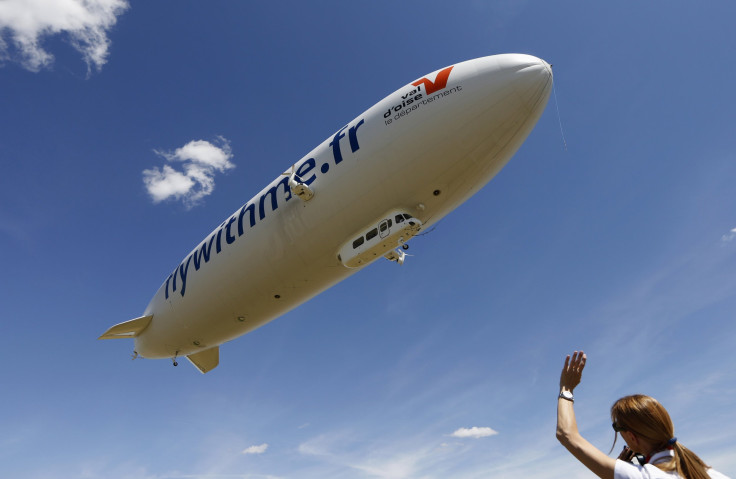Lockheed Martin (LMT) To Sell Airships Worth $480M To Straightline Aviation

Almost 80 years after the Hindenburg disaster in New Jersey brought the era of airships to an abrupt end, the giant flying machines look poised to make a comeback. U.S. aerospace and defense giant Lockheed Martin has reportedly signed a letter of intent to supply Straightline Aviation, a U.K.-based aviation services company, 12 of its new hybrid airships for $480 million.
The design of the airships puts them at 280 feet long and capable of carrying 47,000 pounds of cargo, and Straightline plans to use them for running operations for oil and gas companies — which often operate in remote locations with irregular terrain — to transport their commodities and machinery, according to the Wall Street Journal.
Relying on both a lighter-than-air gas and their aerodynamic shape for lifting, airships provide high endurance at low operating costs, making them attractive for long-distance cargo transport so long as time isn’t an important factor. The Lockheed Martin airships fly at around 90 miles an hour, the Journal reported, far slower than the average speed of over 500 miles an hour at which modern day commercial aircraft fly.
Speaking of the advantage airships could provide to businesses in remote locations, Straightline CEO Mike Kendrick, using the example of building ice roads in North Canada, said: “You don't have to build ice roads ... and wait for the environmentalists to give you permission. You can just land on ice,” CNBC reported.
The first of the helium-filled airships is scheduled for delivery in 2018, with the remaining to be delivered by 2021, according to CNBC.
Hybrid Enterprises is the exclusive reseller for Lockheed Martin’s airships. According to its CEO Rob Binns, this type of airship has a market of several hundred globally. A design for a larger airship, capable of carrying 200,000 pounds of cargo, already exists, according to the Journal.

Another U.K. company, Hybrid Air Vehicles, is looking at the passenger side of the business. Using a lighter model of airships than Lockheed Martin, its Airlander 10 airships are targeted at high-end consumers, according to the Journal. The airship is said to be the largest aircraft in the world and was unveiled last week, CNBC reported, adding that Straightline has been talking with HAV for a potential future deal.
The Airlander 10 was originally designed for the U.S. military. After that association didn't work out, the airship was aimed at the oil and gas market as well but “tourism and leisure is pushing itself to the front,” Stephen McGlennan, HAV’s CEO, said, the Journal reported.
Besides cargo and tourism, other obvious uses for airships would be in disaster relief, communications and agriculture.
In the Hindenburg incident in 1937, a large German airship, called Zeppelins, caught fire while trying to dock in New Jersey and 36 people died. While that brought a quick and abrupt end to the airships, a crucial difference between then and now is that Zeppelins used hydrogen, a gas lighter than air but highly flammable. Airships now use helium, an inert gas that does not burn.
© Copyright IBTimes 2025. All rights reserved.




















